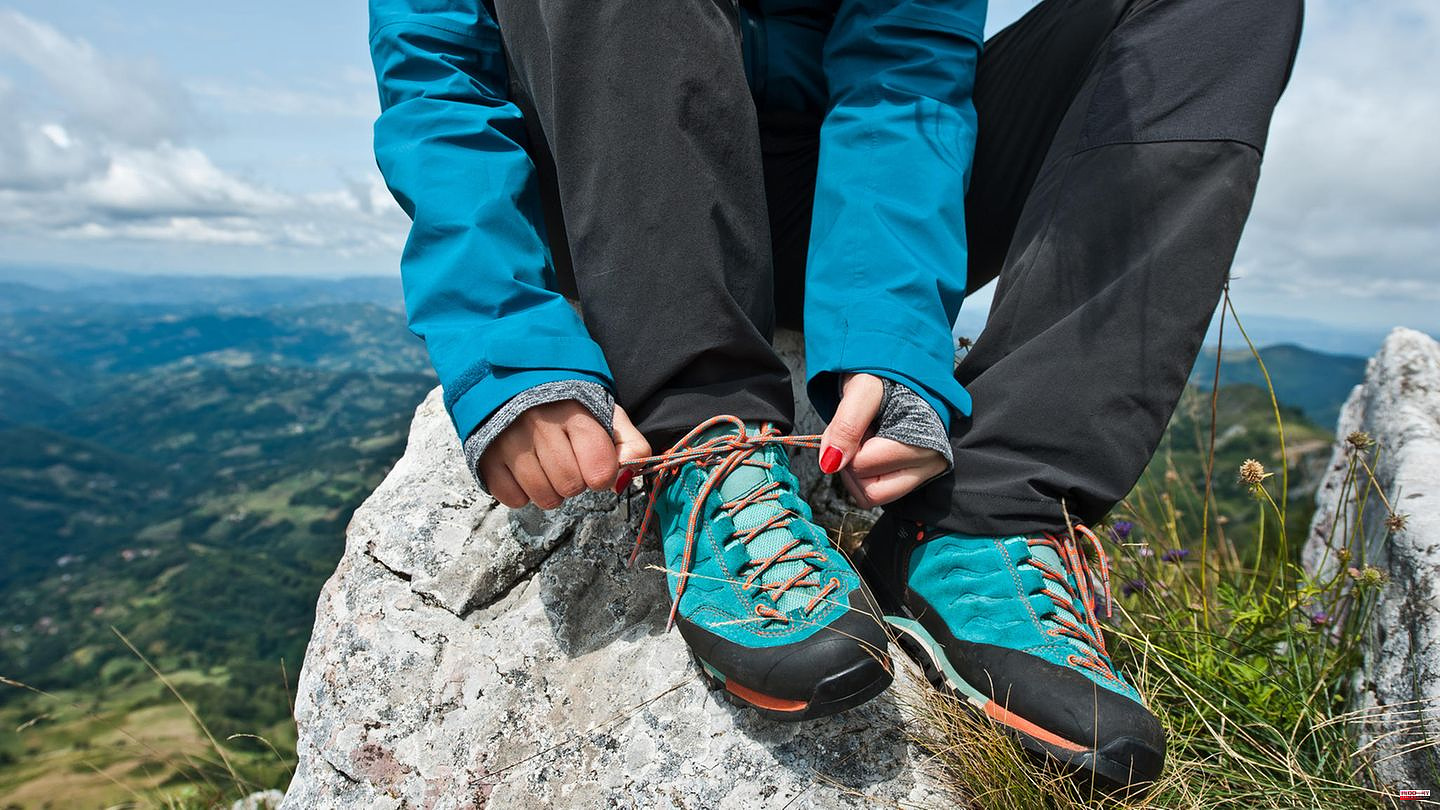Classic hiking shoes are characterized by a high shaft, a thick sole and robust materials. This makes them particularly durable, and the solid treads also protect your feet from damage to health when going up and down. They are therefore always the better choice for demanding tours in the mountains. However, if you only want to go for a long walk in the forest or take your dog for a short walk on uneven terrain, light hiking shoes are usually sufficient. But what exactly does the term actually mean? And what are the advantages and disadvantages of the models?
So-called light hiking shoes are reminiscent (at least visually) of sneakers because they are similarly light and low. But in contrast to ordinary sneakers, the ankle-deep shoes offer more support when hiking. And also offer more protection against dirt and moisture. In addition, the shoes have a flexible sole due to their construction, which ideally protects you from sharp stones - but still allows your feet to roll softly. For this reason, light hiking shoes are suitable for all routes that are marked blue (i.e. easy) in many hiking guides.
Other features that characterize light hiking shoes are as follows:
In fact, lightweight hiking shoes offer many advantages, but they also have some disadvantages. You can read what they are here:
advantages
Disadvantages
The two biggest advantages that lightweight hiking shoes have to offer are their low weight and flexible soles. This allows you to enjoy a comfortable fit, for example by being able to roll your feet more easily.
At the same time, the soft sole also has a disadvantage: depending on the hardness of the ground, stones that are thrown under your feet can become noticeable. In addition, the low shoes offer no protection for your ankles if you twist your ankle in them.
Due to the way they are made, light hiking shoes are often very air-permeable and are therefore particularly suitable for short trekking tours and long walks in the forest on warm autumn days or in summer.
Precisely because most models are breathable, they don't keep your feet that warm on cold days. For this reason, light hiking shoes are less suitable for cold winter days when your feet freeze more quickly.
There are light hiking shoes with waterproof and breathable membranes (such as those from the Gore-Tex brand) that are designed to protect your feet from getting wet. Say when you walk through puddles or on wet surfaces.
Waterproof models, on the other hand, have the disadvantage that they are less permeable to air than light hiking shoes without a membrane. In this case, however, you will get wet feet more quickly on rainy days.
In contrast to light hiking shoes, so-called mid cuts have a slightly higher cut, but have a lower shaft than "normal" hiking shoes. For this reason, the medium-heavy models are mainly recommended for easy mountain tours - or when you need better protection for your ankles. Of course, the mid-height trekking shoes are (depending on the manufacturer) also available with a breathable, waterproof Gore-Tex membrane.
This article contains so-called affiliate links. Further information are available here.












